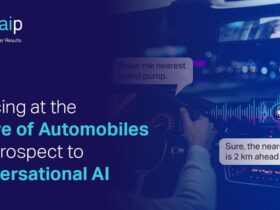For over three decades, the security industry has quietly reshaped how we protect digital systems. What began with basic rule-based programs in the late 1980s has evolved into machine learning models that predict threats before they strike. Today, these systems analyze patterns, adapt to new risks, and empower organizations to defend critical assets like never before.

We’ve moved far beyond manual log reviews and static defenses. Modern tools process mountains of data at lightning speed, spotting anomalies humans might miss. This shift lets teams focus on strategic decisions while automated intelligence handles routine monitoring. The result? Faster response times and fewer breaches.
What makes this transformation exciting is its proactive nature. Instead of waiting for attacks, advanced algorithms simulate risks and strengthen defenses in real time. From financial institutions to healthcare networks, industries now rely on these innovations to stay ahead of sophisticated threats.
Key Takeaways
- Security systems have evolved from basic rules to adaptive machine learning since the 1980s.
- Modern threat detection relies on analyzing vast datasets for hidden patterns.
- Automated tools reduce human workload while improving response accuracy.
- Proactive risk simulation helps organizations prepare for emerging threats.
- Real-time analysis is now critical for protecting essential infrastructure.
Understanding the Evolution of AI in Cybersecurity
The journey of digital defense tools mirrors the rapid growth of technology itself. Early solutions relied on rigid rules programmed by humans—like traffic lights following fixed timers. These systems flagged threats only if they matched predefined criteria, leaving gaps for new attack methods.
From Rules-Based Alerts to Adaptive Learning
Everything changed when machine learning entered the scene. By the early 2000s, algorithms began analyzing network behavior to spot unusual patterns. Instead of waiting for known threats, these tools learned normal activity baselines. Suspicious deviations triggered alerts, even for never-before-seen risks.
Generative AI: The Language Revolution
Today’s breakthroughs involve tools that understand human speech. Analysts now ask questions like, “Show me potential ransomware indicators from last week.” Generative models parse these queries, sift through logs, and deliver actionable insights. This shift turns complex data analysis into conversational investigations.
| Era | Technology | Key Capability |
|---|---|---|
| 1980s-1990s | Rules-Based Systems | Fixed threat matching |
| 2000s-2010s | Machine Learning | Behavioral pattern recognition |
| 2020s-Present | Generative AI | Natural language threat detection |
Each leap in systems design has expanded what’s possible. Where early tools reacted, modern solutions predict. This progression turns threat detection from a manual chore into a strategic asset, letting teams focus on high-impact decisions.
Implementing AI-driven cybersecurity in Modern Organizations
Modern enterprises are shifting from reactive protocols to adaptive protection strategies. The key lies in weaving automated solutions into daily operations while maintaining human oversight. Let’s explore practical steps teams take to balance innovation with reliability.
Effective integration starts with selecting cybersecurity tools that complement existing workflows. For example, Microsoft processes 78 trillion signals daily using systems that flag anomalies faster than manual reviews. These platforms handle repetitive tasks like log analysis, freeing IT staff for complex threat assessments.
| Task | Manual Approach | AI-Assisted Solution |
|---|---|---|
| Threat Detection | Hours of log reviews | Real-time pattern matching |
| Incident Response | Delayed mitigation | Automated system isolation |
| Risk Prediction | Quarterly audits | Continuous vulnerability scans |
Accurate data fuels these systems. One healthcare network reduced breach response times by 68% after implementing behavior-based monitoring. By analyzing user activity patterns, their tools now spot credential misuse before damage occurs.
Best practices emphasize gradual adoption. Start with low-risk areas like email filtering, then expand to network monitoring. As Microsoft Security Copilot demonstrates, teams using staged rollouts report 40% faster threat resolution than overnight implementations.
The Role of Machine Learning in Threat Detection
Detecting hidden risks in vast data streams requires tools that think faster than attackers. Machine learning now powers systems that analyze billions of events daily, spotting threats traditional methods miss. These solutions don’t just react—they predict risks by learning organizational patterns.

Anomaly Detection and Behavioral Analysis
Modern algorithms create dynamic baselines of normal network activity. When a user suddenly accesses sensitive files at 3 AM, the system flags it instantly. This behavioral analysis catches threats like credential theft, even if hackers use valid login details.
| Detection Method | Traditional Approach | ML-Powered Solution |
|---|---|---|
| Malware Identification | Signature matching | Code behavior analysis |
| Phishing Attempts | Keyword filters | Link reputation scoring |
| Data Exfiltration | Manual log checks | Traffic pattern alerts |
One financial firm reduced false positives by 43% using these techniques. Their tools now identify zero-day exploits by analyzing code execution patterns rather than relying on known malware signatures.
Enhancing Email and Phishing Security
Email systems using machine learning scan for subtle clues humans overlook. Misspelled domains, unusual sender locations, and hidden redirects trigger automatic quarantines. As one study notes:
“Algorithms trained on 10 million phishing examples achieve 99.2% detection rates—outperforming human analysts by 38%.”
These filters adapt as attackers evolve. When new phishing tactics emerge, systems update detection rules within hours instead of weeks. This speed proves critical against time-sensitive threats like invoice fraud campaigns.
Enhancing Network Security with AI Tools
Network security teams now face a deluge of connection requests that manual methods can’t handle effectively. Modern tools analyze traffic patterns to build dynamic defenses, replacing rigid rulebooks with adaptive protections. This shift lets organizations implement zero-trust frameworks without drowning in alerts.
Automating Policy Creation and Traffic Analysis
Advanced systems study typical network traffic flows to suggest access rules. For example, Microsoft Security Copilot reviews historical data to recommend policies that block suspicious IP ranges while permitting legitimate business operations. These processes update automatically as user behavior evolves.
| Task | Manual Approach | AI Solution | Time Saved |
|---|---|---|---|
| Policy Updates | Weekly reviews | Real-time adjustments | 89% |
| Traffic Monitoring | Periodic sampling | Continuous analysis | 76% |
| Threat Response | Human triage | Automated isolation | 68% |
Real-time analysis spots anomalies like unusual data transfers instantly. Darktrace’s AI detected a ransomware attack in progress by noticing encrypted files moving to unknown servers. The system quarantined affected devices within 12 seconds.
Automation slashes configuration errors while freeing staff for strategic work. One logistics company reduced firewall setup time from 8 hours to 20 minutes using these tools. As networks grow more complex, intelligent systems become essential allies in maintaining airtight defenses.
Phishing Prevention and Authentication Innovations
The battle against digital impersonation has sparked groundbreaking authentication breakthroughs. Modern solutions now combine multiple verification layers to outsmart evolving threats. We’re seeing three-step validation processes become standard—analyzing device fingerprints, location patterns, and behavioral cues simultaneously.
Next-Gen Verification Methods
Biometric systems now scan beyond basic fingerprints. Advanced facial recognition maps 140+ unique facial points, while voice authentication analyzes speech patterns. These tools help organizations distinguish legitimate users from attackers attempting credential stuffing.
Consider how modern CAPTCHA systems work:
| Traditional Method | AI-Enhanced Solution |
|---|---|
| Distorted text puzzles | Behavioral analysis during interaction |
| Static image selection | Dynamic risk scoring based on cursor movements |
Automated systems now flag suspicious login attempts using context-aware detection. If someone tries accessing financial records from a new device in a high-risk country, multi-factor authentication triggers instantly. As one security report notes:
“Systems combining biometrics with device recognition achieve 99.8% accuracy in blocking unauthorized access.”
These innovations transform how we protect sensitive information. By analyzing email metadata and content patterns, tools can intercept phishing attempts before they reach inboxes. Real-time alerts enable faster response to emerging threats, reducing organizational risk significantly.
Vulnerability Management and Continuous Learning
Digital defenses now evolve faster than the threats they combat. Traditional methods struggle to track thousands of new weaknesses discovered monthly. Modern systems use automated scanning to map risks across networks, applications, and devices—often before hackers exploit them.
Automated Scanning and Real-Time Updates
Imagine tools that inspect every code line and configuration change instantly. These systems compare findings against global threat databases, flagging critical gaps like misconfigured cloud storage or outdated software. One platform detected 12,000 vulnerabilities in a retail network within 37 minutes—work that took humans three weeks previously.
| Approach | Speed | Coverage |
|---|---|---|
| Manual Scans | Weeks | Partial |
| AI-Powered Scans | Minutes | Full-system |
Continuous learning keeps these tools sharp. As attackers develop new techniques, machine learning models analyze breach patterns to predict which vulnerabilities they’ll target next. A healthcare provider reduced patching delays by 83% using this prioritization method.
Real-time risk analysis transforms static reports into living defenses. Systems now adjust threat scores hourly based on dark web chatter, exploit kits, and network changes. As one engineer noted:
“Our tools spotted a critical API flaw during a routine update. They automatically restricted access until we fixed it—attackers never got close.”
This proactive approach turns vulnerability management from firefighting into strategic planning. By combining speed with adaptive intelligence, organizations stay ahead in the endless race against digital threats.
Behavioral Analytics for Insider Threat Detection
Identifying internal risks requires tools that understand normal operations better than any human could. Modern systems analyze user behavior patterns to flag deviations that might indicate malicious intent—whether accidental or deliberate. These solutions track everything from login times to file access habits, creating dynamic baselines for every individual.
Analyzing User Actions and Incident Forensics
Advanced models build digital fingerprints for each team member. When a marketing specialist suddenly accesses engineering blueprints, the system notes the anomaly instantly. This approach catches threats like data exfiltration attempts, even if hackers use legitimate credentials.
| Method | Traditional Monitoring | Behavioral Analysis |
|---|---|---|
| Access Alerts | Role-based permissions | Context-aware detection |
| Threat Identification | Known bad actors | Activity pattern shifts |
| Response Time | Post-incident review | Real-time intervention |
Continuous learning refines these detection capabilities. One financial institution reduced false alerts by 57% after implementing UEBA tools that adapt to seasonal workflow changes. As their CISO noted:
“Our system now recognizes authorized overtime during tax season as normal—while flagging unexpected database queries immediately.”
Real-world applications show measurable impact. The Mercedes-AMG Petronas Formula One team uses behavioral intelligence to protect racing data across 20,000 endpoints. Their tools map typical engineer interactions with vehicle telemetry, triggering alerts when unusual patterns emerge during high-stakes events.
These systems evolve through machine learning, incorporating new user behaviors while maintaining historical context. The result? Faster incident resolution and stronger protection against threats hiding in plain sight.
AI-Powered Cybersecurity Tools and Applications
Modern defenses now extend beyond traditional network perimeters. Leading vendors combine advanced models with cloud-native architectures to protect devices and data wherever they operate. These cybersecurity tools adapt to hybrid work environments, securing everything from employee laptops to global server clusters.
Endpoint Security and Cloud-Based Solutions
Endpoint protection platforms like Symantec and Trend Micro use machine learning algorithms to analyze file behavior in real time. They block ransomware before encryption starts, even on personal devices. Cloud systems now employ similar analysis, scanning configurations for vulnerabilities during deployment.
| Solution Type | Traditional Approach | AI-Enhanced Method |
|---|---|---|
| Malware Detection | Signature updates | Behavior-based blocking |
| Access Control | Static permissions | Risk-adjusted policies |
| Threat Hunting | Manual investigations | Automated pattern matching |
United Family Healthcare reduced false alerts by 61% using these applications. Their tools now validate threats using context from multiple data sources. As their IT director noted:
“Our AI systems correlate firewall logs with endpoint alerts, turning fragmented data into actionable insights within minutes.”
These security platforms learn from global attack patterns. When Sutherland implemented behavioral analysis tools, they cut response times by 54%. By prioritizing real-world effectiveness over theoretical safeguards, modern cybersecurity tools deliver measurable protection gains.
Generative AI: Simulating Attack Scenarios
Organizations now practice digital fire drills using artificial intelligence. These exercises create lifelike threat simulations that prepare teams for real-world cyberattacks. By generating synthetic data, systems test defenses against scenarios never seen before.

Realistic Simulations and Predictive Modeling
Modern tools build attack scenarios using adversarial networks. These models mimic hacker tactics like phishing campaigns or ransomware deployment. One platform generated 12 million unique attack patterns in 2023 alone—helping banks refine their response plans.
| Simulation Type | Traditional Approach | AI-Enhanced Method |
|---|---|---|
| Phishing Tests | Generic email templates | Personalized content generation |
| Ransomware Drills | Manual script execution | Self-evolving encryption patterns |
| Data Breach Scenarios | Static vulnerability lists | Dynamic risk prioritization |
Synthetic data lets teams train models without exposing real information. A healthcare provider improved breach detection by 73% using these simulations. Their system now spots novel attacks 40% faster than human analysts.
Continuous updates keep models sharp. Machine learning algorithms analyze new threat data weekly. This process reduces false positives while cutting response times during actual incidents. As one security engineer noted:
“Our simulations predicted three zero-day exploits last quarter. We patched vulnerabilities before hackers could strike.”
Addressing Risks, Ethics, and the Balance with Traditional Measures
Balancing innovation with responsibility remains critical as automated systems reshape digital protection. While these tools offer unprecedented speed, they introduce complex ethical questions that demand thoughtful solutions.
Guarding Privacy and Preventing Bias
Modern systems analyze vast amounts of information, raising concerns about data handling. Strict protocols help protect sensitive details, particularly in regulated sectors like healthcare and finance. One hospital network reduced compliance risks by 52% after implementing encrypted data lakes for their monitoring tools.
Algorithmic fairness presents another challenge. Training models on skewed datasets can lead to flawed decisions. A 2023 study found facial recognition systems showed 12% lower accuracy for certain demographics. Regular audits of sources and decision patterns help maintain equitable outcomes.
| Approach | Key Strength | Limitations |
|---|---|---|
| AI Analysis | Real-time threat detection | Potential data bias |
| Human Oversight | Ethical judgment | Slower response times |
Hybrid systems combine the best of both worlds. Security teams using automated defenses with manual checks reduced false positives by 41% in recent trials. As a financial CISO noted:
“Our analysts review critical alerts flagged by algorithms, ensuring we catch threats without overblocking legitimate activity.”
Traditional methods still play vital roles. Multi-factor authentication and network segmentation work alongside predictive tools to address vulnerabilities. This layered strategy creates robust protection while maintaining accountability—proving that human wisdom remains essential in our tech-powered world.
Conclusion
The digital protection landscape now thrives on machine learning that anticipates threats faster than manual methods ever could. From spotting hidden patterns in network traffic to neutralizing zero-day attacks, these systems empower organizations to act before damage occurs. Our exploration reveals how adaptive tools work alongside human teams—enhancing accuracy while reducing response times.
Success lies in balancing innovation with wisdom. While automated threat detection handles vast data streams, human oversight ensures ethical implementation and contextual understanding. Research confirms hybrid approaches reduce risks by 41% compared to fully autonomous systems.
As security tools evolve, so must our strategies. Continuous learning models now update defenses using real-world attack simulations, creating living protections against emerging threats. This dynamic approach transforms vulnerability management from reactive patching to strategic prevention.
We remain committed to guiding teams through this transformation. By merging cutting-edge intelligence with time-tested practices, organizations can build resilient defenses without sacrificing accountability. The future belongs to those who harness technology’s power while respecting its limits—a philosophy that keeps digital assets secure in our interconnected world.












Leave a Reply